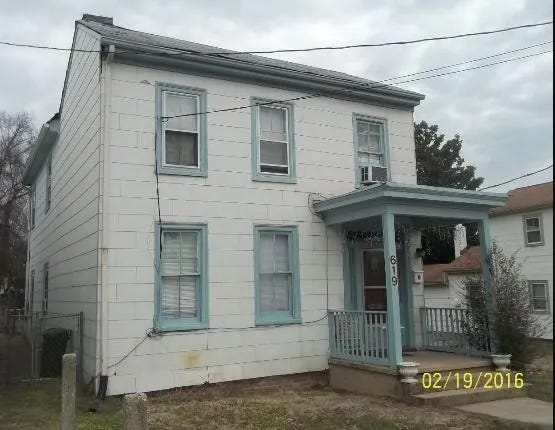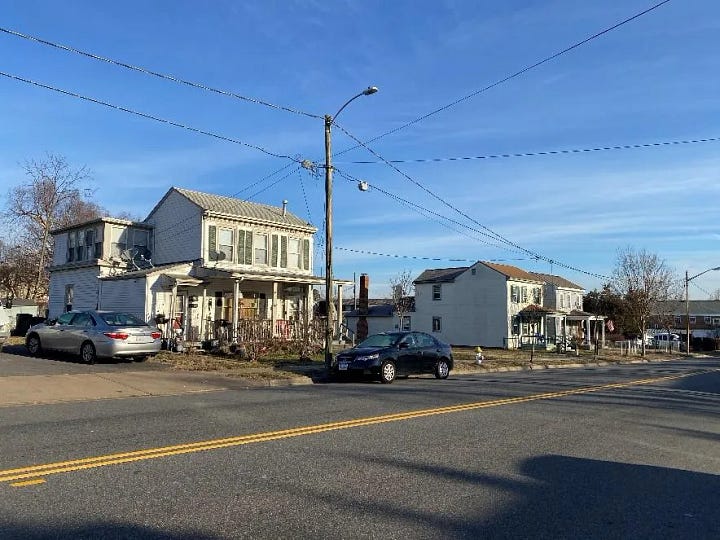OPINION: Most Affordable Housing Isn't New
As the city struggles to meet housing demands, and increase affordable housing, it's important not to overlook existing housing stock that could benefit the public.
by Danae Peckler, HFFI Preservationist
GUEST WRITER
We all support increasing the supply of housing within Fredericksburg city limits. We just don’t have much of a shared understanding about what that growth will look like—what types of new housing are best suited for which locations or what kind of benefits and trade-offs are expected in those places.
Our city is not alone in grappling with the current housing crisis and this is not the first time local residents have voiced concern about rapid growth’s impact on the community, shown interest in preserving the character of their neighborhood, and struggled with the rising cost of housing.
A look back at vision statements, goals, planning documents, and action plans produced by our elected leaders and professionals on City staff over the last two decades reveals a consistent dialogue about Fredericksburg’s future with the simultaneous desire to grow AND preserve this community.
It is widely acknowledged that the most “affordable” housing units are within older, smaller buildings on smaller, narrow lots. Densely developed from the start, these spaces are essential, critical components of a city’s housing stock—yet they are also at the highest risk. During the last thirty years or more across Virginia, areas with increasing development pressure saw these older resources become soft targets for neglect and demolition as profit margins from newer, bigger buildings rose.
In the last decade, several less “historic” and “attractive” houses have disappeared around town. Perhaps you have noticed one or two?


Some people say that is “the way of things”—older smaller buildings should be sacrificed for progress. Short-sighted and wasteful, this thinking has eroded the historic fabric and collective memory of many American cities.
Fredericksburg’s existing residential resources—in and out of the historic district—are the most vital and affordable components of our housing stock. What kind of support is available for individual property owners and smaller-scale real estate investors who wish to maintain and significantly rehabilitate these assets?
A June 2023 report produced by a nationally recognized expert compiled nearly a dozen ways the City of Fredericksburg could incentivize the preservation of our built environment—none of which place any restrictions on property owners or City staff.
So if we, as a locality, are going to change the rules in support of new housing construction, why hasn’t the City Council moved with equal speed to encourage and support those seeking to preserve and update our existing stock?
We hope that our elected representatives will join HFFI and engage whole-heartedly in the thought-provoking dialogues occurring throughout the Preservation community, particularly at the local level. Because we can all agree that Fredericksburg should do as much as we can to promote the preservation and rehabilitation of its most affordable, most sustainable, and most culturally diverse housing type.
Local Obituaries
To view local obituaries or to send a note to family and loved ones, please visit our website at the link that follows.
Weather and Traffic
Support Award-winning, Locally Focused Journalism
In less than a year, FXBG Advance has become the news leader in Fredericksburg, Spotsylvania, and Stafford through its innovative mix of:
Twice-daily newsletter - At 6 AM and 5 PM every Monday through Friday, the Advance brings the most important news directly to your inbox.
Education Reporting - Adele Uphaus has won multiple awards for her coverage of education issues locally and across the state. Now, she brings her experience, insights, and expertise to the Advance, providing our citizens some of the finest education writing and reporting in the commonwealth.
Political Reporting - From council meetings to campaigns, and fundraising to finance, the Advance is returning the Fourth Estate to its rightful place as a government watch dog.
Breaking News - From court cases to high-profile government moves, the Advance is the first to inform residents.
Investigative Journalism - Last year, the Advance broke major stories around improperly filed election documents, misleading sample ballots, disenfranchising Spotsylvania Count School parents, and book bans.
Election Coverage - The Advance offered the most complete coverage of the 2023 election, with in-depth candidate profiles, daily tracking of events, leading debates, and pre-dawn to post-midnight Election Day coverage. And 2024 brings even greater coverage.
Spotlights - From local businesses to nonprofit organizations and regional leaders, the Advance brings the people who make things happen to your attention.
Multi-partisan Commentary - Martin Davis is a 20-plus-year journalist recognized for superior commentary and political writing; Shaun Kenney has his hands on the pulse of political leaders across the Commonwealth. Together, they bring an unparalleled level of analysis and insight into the issues that drive debate in our region.
Political Cartoons - Clay Jones is a nationally recognized talent who draws weekly for CNN. He has returned to Fredericksburg to level his critical eye and razor-sharp drawing at the topics which make us both laugh, and look closer at ourselves.
New Dominion Podcast - Each week, Martin Davis and Shaun Kenney interview guests from across the region and the state. Growing to over 1,000 listeners in just six months, NDP has become a leading force in political, cultural, and social discussion.
We thank each and every one of you who have made the Advance a part of your day, and we’re excited to say that more-exciting announcements are just around the corner as we continue to innovate and expand our coverage of the region.
The donations of individual readers have made this year possible. Please join the hundreds who are supporting excellence in journalism by subscribing for just $8 a month.
Where does your money go?
It goes to support the great journalists we have - like Adele Uphaus - and the ones we look to hire in the year ahead.
If you can spare $8 a month, we’ll be both grateful, and reward your trust in us with more journalism, more stories, and more connections to organizations and people who make our region a great place to live.
If you can’t, thank you for reading the FXBG Advance!, and consider sharing us with your friends.
In 2024, let’s build an even better Advance - together!
Thank you for reading and supporting FXBG Advance.
-Martin Davis, Editor-in-Chief




Excellent take on affordable housing. Fredericksburg is replete with neighborhoods that were once characterized as worker housing. Back in the day, this region had numerous factories and a workforce that needed to be within a reasonable commuting distance (not everyone had cars, etc.). The industrial buildings have been repurposed for other uses, but many of the old neighborhoods are still intact. Furthermore, in new housing developments, the new houses use up every inch of ground within the required setbacks of an individual lot. The older neighborhoods, however, have more traditional lot sizes where it is possible to build additions for growing families without having to seek zoning variances. The newer building codes have become much more supportive for maintaining older homes and the local zoning code also helps to maintain the character of the old neighborhoods (as long as there is a zoning administrator who knows what he/she is doing). Historic designation would not change those powerful underlying tools, but HFFI can still support and advocate for neighborhood preservation as a public policy. They are to be commended for initiating this conversation.
Is there a way to find out which streets/neighborhoods in Fredericksburg are part of the extended historic district mentioned in the article? A quick Google search yielded no result.